Into the Atelier
Into the Atelier
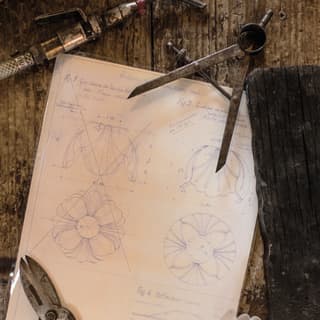
There’s a new level of luxury aboard the world’s most famous train. Join us as we discover how the beautiful details of the Venice Simplon-Orient-Express’ Grand Suites were created.
Back in the days of the original Orient Express, it was possible to buy certain carriages. During the 1900 Universal Exhibition in Paris, the carriages were showcased and the aristocracy fell in love with the level of luxury. “Inspired individuals would purchase their own carriage and task designers with transforming them into beautiful and opulent spaces that were uniquely theirs,” Pascal Deyrolle, general manager of the Venice Simplon-Orient-Express, explains. “The Grand Suites are a re-imagining of this tradition. We’re going back to our history to create something that feels revolutionary.”
Opulence is the word. Each of the six uniquely designed to reflect the spirit of the city they are named after: Paris, Venice, Vienna, Prague, Budapest and Istanbul. On a train renowned for timeless art deco details, black tie dinners and cocktails by the piano, the Grand Suites offer a whole new level of luxury. Anticipate plush double beds, marble en-suite showers, private dining, and free-flowing champagne.
To create something this spectacular requires authenticity. As Pascal says, “Silverware should be heavy, a door handle should be heavy, a crystal glass should be heavy... That’s the way luxury has always been.” And authenticity requires the very best craftspeople.
Pascal, along with Chief Engineer Jean-Marie Moreau, sought out artisans at the top of their respective fields who shared a passion for the history of the train. We set off to see some of them at work.
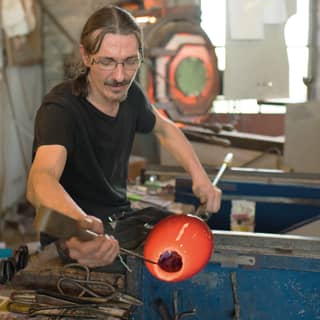
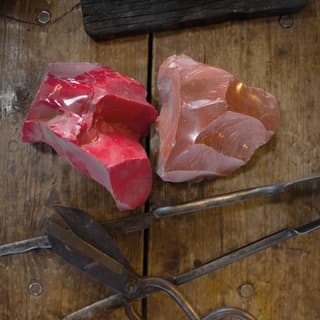
The first stop is Verrerie du Marais, a glassblowing workshop on the outskirts of Riom, France. Here we meet Nicolas Diverchy. Nicolas trained in glassblowing throughout France and Sweden. Today he works to ensure this vintage craft is as modern and fashionable as ever.
His boutique is an Aladdin’s Cave of multi-coloured vases, lamps and artwork. The adjacent workroom is a whole other world; a den of raw products and barbarous-looking tools, dominated by the glowing central furnace. It’s temperature is kept between 1000°C and 1500°C.
Nicolas has been tasked with creating the spectacular glass sinks and delicate light fixtures for the train’s suites. He begins with base elements, layering them with coloured glass for splashes of vibrancy. Most of his materials are locally sourced, while some were donated or salvaged. He rotates between the blistering heat of the furnace and several other stations in lithe, well-practised movements. He uses iron pincers and borers to shape, and nothing but a stack of damp paper and an ungloved hand to cool and smooth the red-hot material. The work feels both elemental and theatrical.
However the show is a quick one, as Nicolas works fast. “The quality is not in the time, but in the process,” he quips. As a final flourish, the sapphire-blue glass is cut and blooms outwards, and it is twisted and turned with expert precision to let gravity shape it into delicate petal-like edges. Nicolas explains, “With the twists and the layers, it’s like capturing motion.” It’s a fitting quality for the world’s most romantic journey.
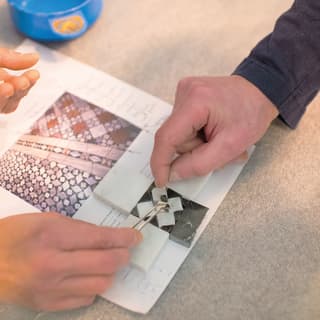
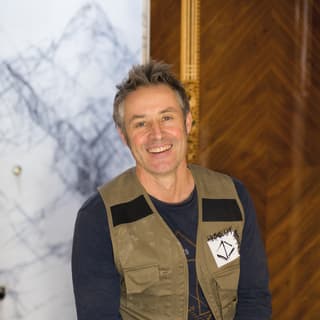
Next up, we travel to the train depot near Clermont-Ferrand where work is still underway on the train’s new carriage. Here we meet famed mosaicist Jérôme Clochard, an expert in the restoration of ancient mosaics. Previous projects have seen him work on opera houses, including the Palais Garnier and Opéra-Comique in Paris.
Compared to the spectacle of the glassblowing workshop, Jérôme’s work is marked by finesse and precision. There are no wrought iron pincers or roaring flames; one of his most precious tools is a gleaming, delicate pair of tweezers. Materials including marble, onyx, Venetian granite and Italian glass are cut to unfathomably precise small sizes called ‘tessels’. Then Jérôme carefully works them into the template he has drawn, adding them upside down in a method called ‘indirecte’. When he is happy, they are placed and sealed to make them strong and water tight.
This step is especially important for the Grand Suites, which need to accommodate for the constant vibrations of the train and the delicate, antique materials used. These are unique challenges, but Jérôme relishes them. “It’s a fascinating project and a beautiful professional relationship,” he smiles, “we’re both working to bring a gem to life.”
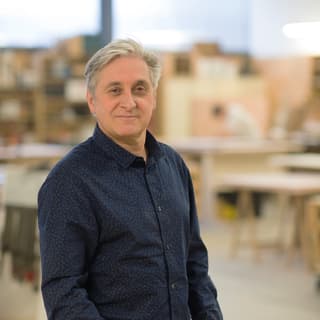
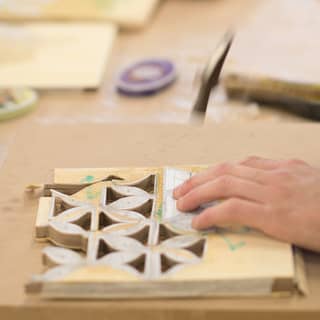
Last but by no means least, we head to meet Philippe Allemand — the man responsible for the marquetry, one of the train’s most striking and memorable features. Considering that the art form seems like such an old-world treasure, Philippe’s atelier is incredibly modern, and his talented team are younger than many would anticipate.
His relationship with the Venice Simplon-Orient-Express began in 1997, when he was commissioned to restore one of the sleeper carriages. Since then he has had a hand in almost all aspects of the train’s marquetry and wood panelling, treating the carriages like a collection of old friends.
The marquetry process is incredibly delicate. To add to the luxe feeling, Philippe sticks to exotic woods, many of which are antique finds he salvages from closing down workshops. Each layer of wood is shaved to a thickness of between 0.6 and 0.9mm, cut using a specialised 1mm saw, carefully layered into position, and fixed together using a glue that is brewed on-site using fish bones.
“Each 3cm of marquetry could contain between 8 and 10 individual elements. Therefore each large panel can contain several hundreds or thousands of pieces,” Philippe explains. The level of artistry and finesse is well rewarded, however. His work is visible in almost all aspects of the Grand Suites, including the walls, cupboards, beds and doors.
We believe in the art of good living. Living well within a work of art makes perfect sense.
Delve deeper into
You might also enjoy
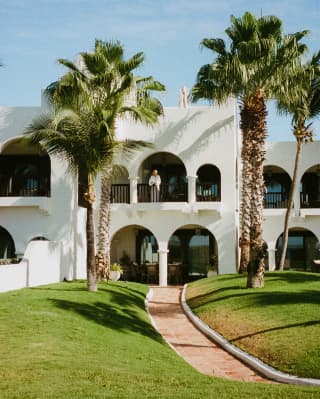
Belmond's Best Beach Villas
“I shall wear white flannel trousers and walk upon the beach,” T.S. Eliot wrote in a wistful ode to life by the sea. Surely the best way to appreciate it is from the comfort of your own villa—ideally with a cocktail in hand.

Surprises of the Cinque Terre
Once a collection of sleepy fishing villages, the staggering beauty of the Cinque Terre now brings in a wealth of visitors, making it one of Italy’s most photographic sights – and up-and-coming wine regions.
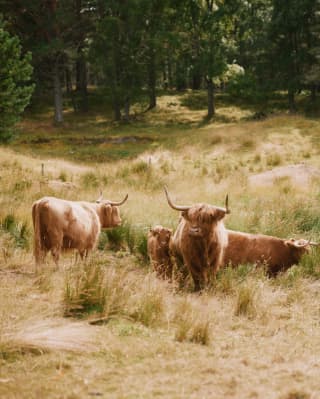
Unlock The Highlands
Departing from historic Edinburgh, journey with us to the heart of the Scottish countryside. Suitcases at the ready: these are the best places to visit in the breathtaking Highlands.

Feast of the Gods
There’s barely been a food story in the past decade that doesn’t relate in some way to Mexico’s jungle larder. On a corn-popping road trip across the Yucatan Peninsula, Javier Arredondo celebrates the mamas who are paving the way forward.
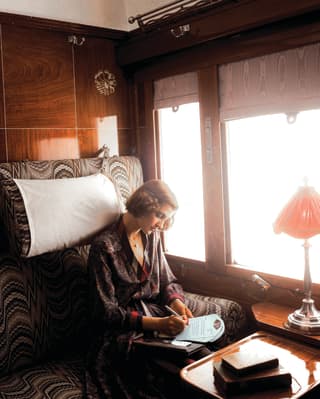
Venice Simplon-Orient-Express: Our History
The carriages that make up our train have held a distinguished role in the art of continental travel for over 100 years. With grand interiors and flowing champagne, we pioneered the most magnificent mode of transport to tour Europe and her finest cities. Now, it’s time for you to be part of our story.

The Cadogan: 200 Years of History
If walls could talk, The Cadogan’s would have more than two centuries of intriguing tales to tell. To hear all about the glamorous stories, head this way.
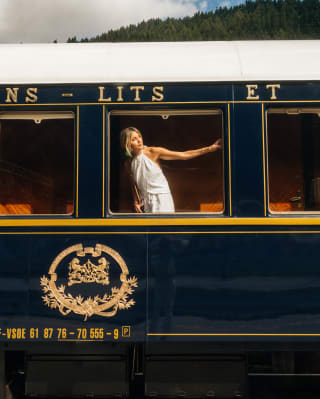
Venice Simplon-Orient Express: An Icon of the Rails
An icon of art deco design and an enduring symbol of luxury, the Venice Simplon-Orient-Express is a true classic. Step on board for a singularly elegant adventure.